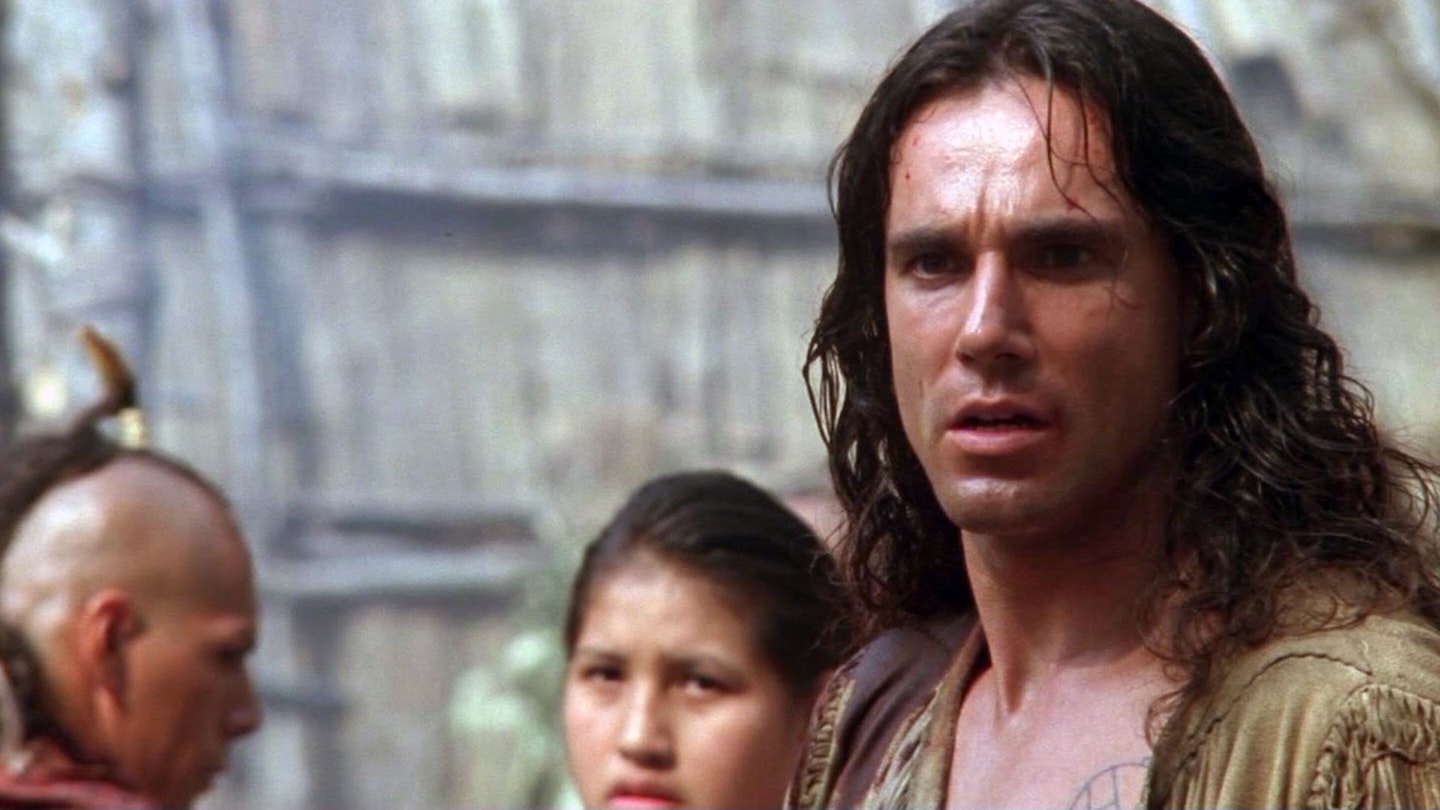Michael Mann's earliest movie memory is of seeing Randolph Scott in The Last Of The Mohicans made in 1936. Its whole-heartened sense of pioneering Americana really tickled Mann Jr. Indeed, so much so that he returned to the oft-told story (12 times and counting), determined to breathe new life into the old dog. With a script (written by both Mann and Christopher Crowe) based in part on Philip Dunne's 1936 screenplay as well as the stodgy old tome by James Fenimore Cooper, The Last Of The Mohicans is a stirring, wonderful film encompassing an old-time splendour in storytelling boasting grand principles of heroism and character and loads of thunderous action.
Hawkeye, a settler adopted into the Mohawk tribe as an orphaned child, is a hunter-warrior ecophile, educated and refined with British sensibilities (hence he speaks perfect English) but harbouring a purist sense of the wild. Characterised by his extraordinary 18th century muzzle-loading rifle and unerring aim, he is wise enough to see through the transparent treachery of the British, yet is irresistibly drawn to the refined eloquence of Cora Munro (Stowe), the daughter of a Scottish general who falls under his protection. As much as this is a story about colonial warfare and hand-to-hand combat with rapacious Indians over a rugged wilderness, there is a stirring love affair at its centre which through all its fierce romanticism never comes across anything but authentic. There is nothing silly or sentimental about the attraction both Cora finds in the striking Hawkeye, and he in the beautiful, self-reliant heroine.
Reclusive and pathologically self-contained, Day-Lewis was never going to be an easy catch for a good old-fashioned yarn featuring much in the way of running around North Carolinan forests in moccasins, a raven mane flowing fetchingly in the summer wind. But catch him Mann did. Perhaps, Day-Lewis recognised in the obsessive director (a Zen adept), a soul akin to his own — the commitment is absolute or not at all. And in a kind of double-top Method fest both director and star camped out in the Alabama wilderness, cutting firewood with authentic tomahawks, learning to survive native-style while sleeping under the stars. Day-Lewis, under the calming eye of Mann, literally transformed into Hawkeye.
"Daniel would carry his gun around all the time," claimed Stowe, somewhat bemused by the boys' antics. "When he went to lunch he'd have that gun with him, when he went to the bathroom he'd have that gun with him. He's sort of not of this world, Daniel."
That is not to say that this is Hawkeye's show alone. Stowe does her finest work to date as the strong-willed, impulsive and entirely alluring Cora — making a mockery of the claim Mann cannot handle strong female roles. And for every hero you need a villain. Magua, a Huron, is a mesmerising, scowl-faced nightmare, motivated by a thirst for vengeance against the Munro family. Wes Studi fills him with bitter pride and grim resolve.
Casting Russell Means as Mohican Chingachook carries with it a real credibility. Means is a renowned Native American activist for the American Indian Movement: he famously occupied both Mount Rushmore and Wounded Knee in the early 70s and castigated both Dances With Wolves (1990) and Thunderheart (1992) for their fatuous depiction of the Native American plight. His acceptance of the role adds a knowing endorsement to Mann's delivery of tribal conflict in the burgeoning Americas.
It is this attention to detail that sets The Last Of The Mohicans apart. Each and every native was meticulously decked out in historically accurate make-up; the guns, the costumes, the language and the entire life-pattern of the leading man were the genuine article. Most spectacular is Fort William Henry, a monolithic wooden edifice, battered, bruised and finally smashed under a French siege, that was built from scratch to original specifications. The ensuing battle a graphic essay on the 18th century blitzkrieg.
Shot with an eye-boggling beauty by Dante Spinotti (after Doug Milsome was " let go "), the film substitutes North Carolina's Burke County in the Blue Ridge mountains for the Northern New York State of Fenimore-Cooper's books. America seems primal under his lens, an untamed wilderness into which modernity is forcing its own strain of corruption. Hawkeye straddles both zones: he is a man inducted into the native fellowship with the earth but a champion of the pioneers (his true kin). Mann also incorporates a subtext that looks toward impending rebellion — the British are an oppressive, legalistic force; the idealistic farmers are seen making signals for independence and self-rule.
